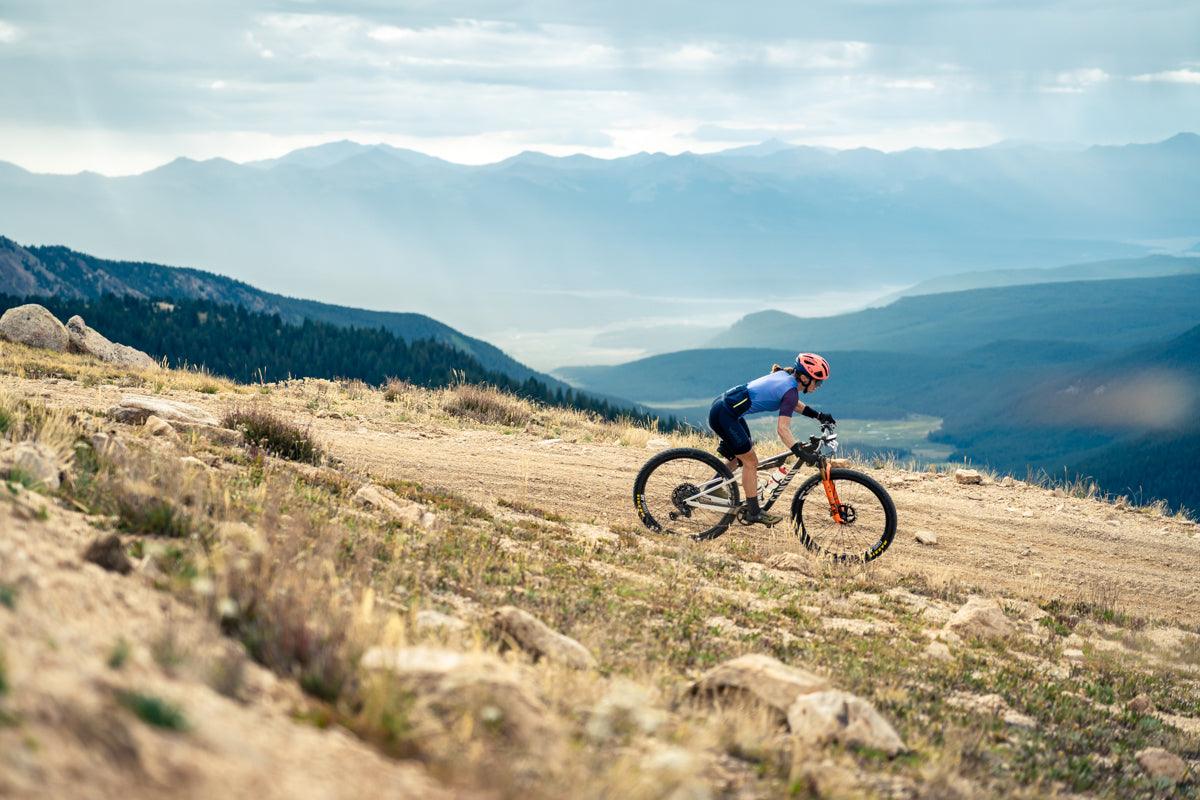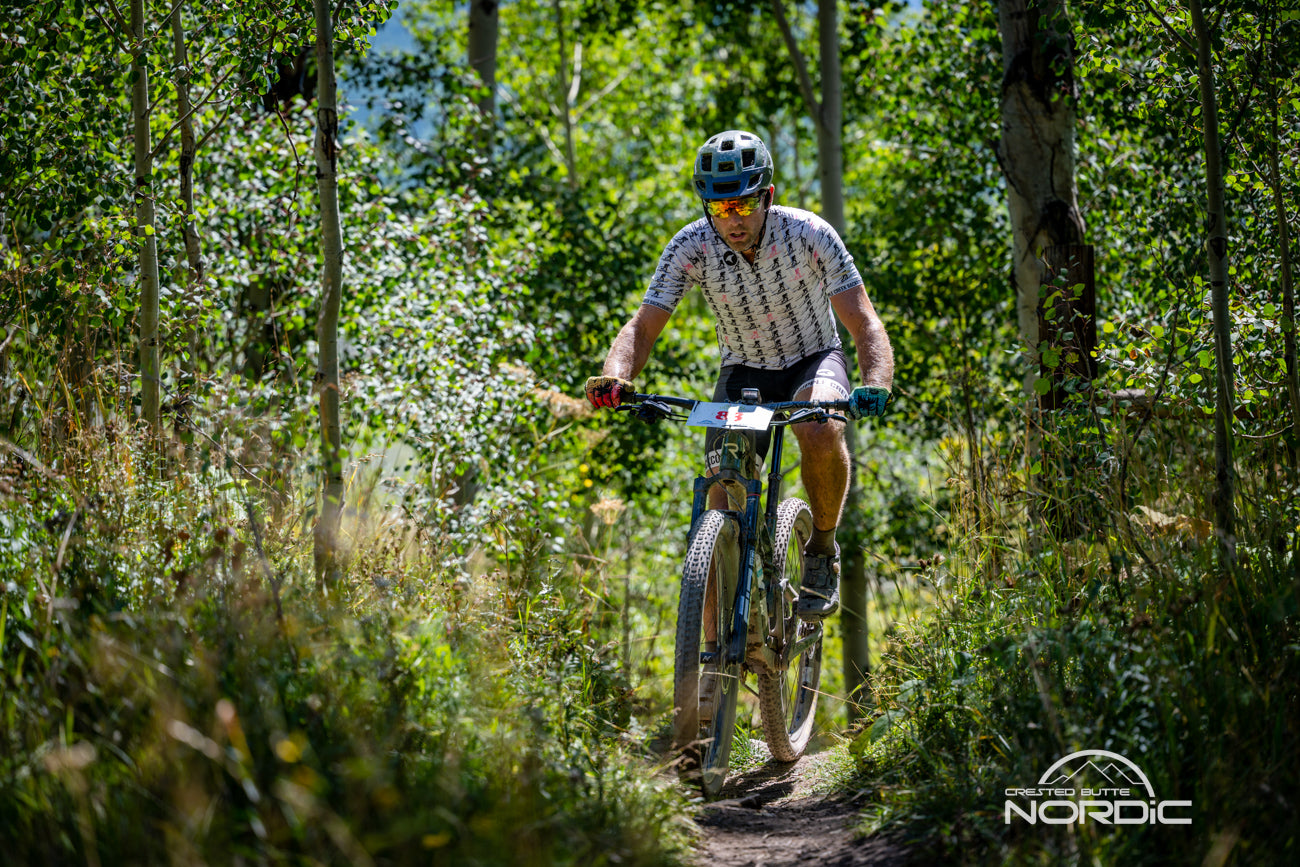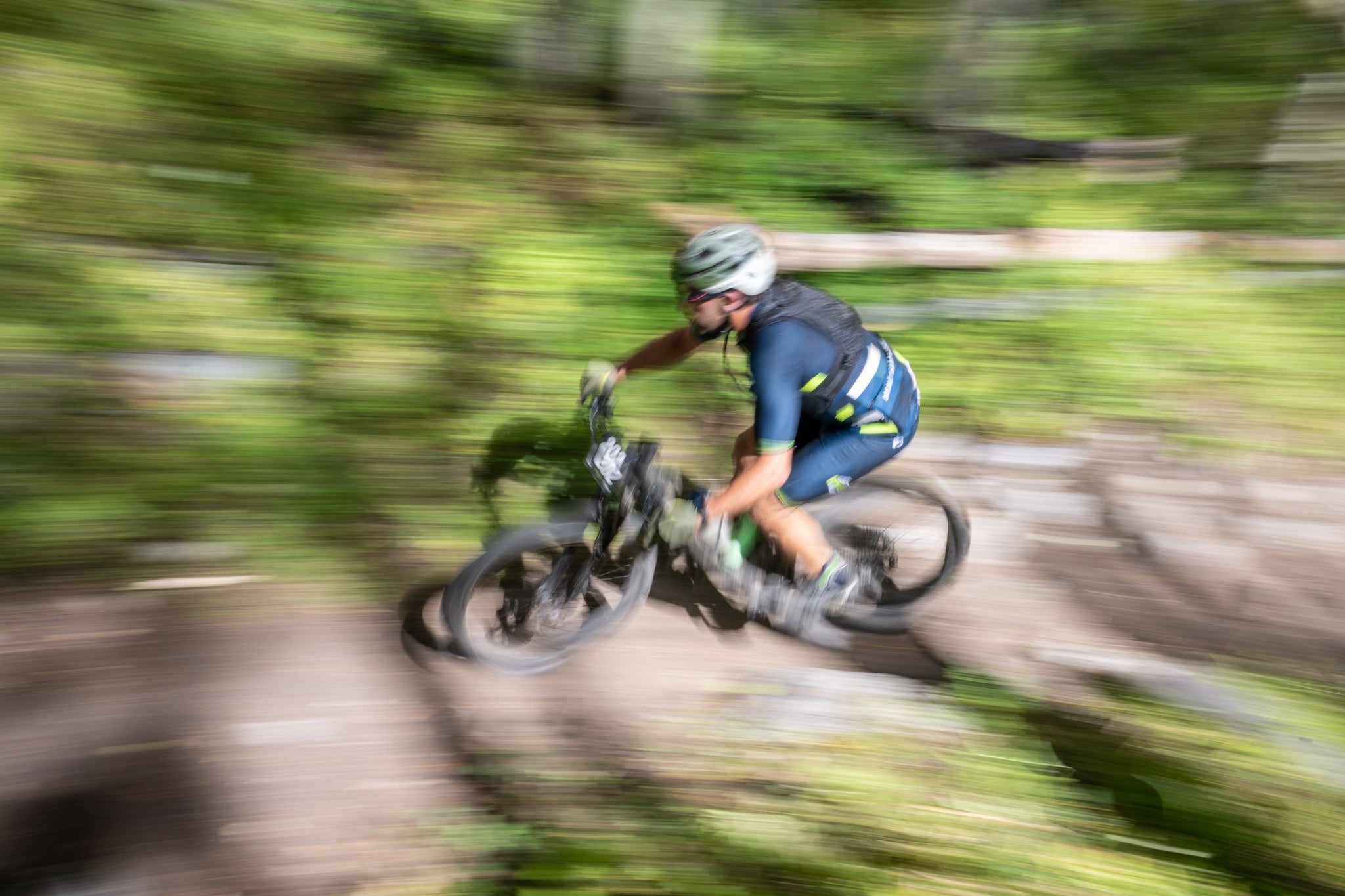
The Grand Traverse Mountain Bike Race
Lessons Learned from my first two wheeled traverse
After six times Traversing the Elk Mountain range on skis, I was finally ready to try it on two wheels. For years, I had friends who had biked similar routes connecting the Aspen and Crested Butte valleys, but since 2014 the Crested Butte Nordic Center has been running the Grand Traverse bike as an official race. The route retraced the historic ski route of the Elk Mountain Grand Traverse (GT) but in reverse, finishing in Crested Butte. The track was in, my physical condition was there, but I wasn't yet a bike racer. As I clicked the “Register” button, I was left wondering if this 40-mile course that climbed 8300 vertical feet across rugged and remote Colorado mountains would be a good first race or a terrible idea.
The Grand Traverse Route


Aspen Mountain Summer Road
Like its ski counterpart, the GT bike edition is an adventure race as much as a cycling race. Immediately out of the start gate, the Aspen Ski Area summer access road climbs 3300 feet in the first five miles. The heinousness of this climb rivals any other MTB race in the country, averaging 13% grades and hitting 20% on a surface that often dissolves to moondust late in the summer, just in time for 200 GT racer wheels to hit it.
Richmond Ridge
Once you make it up the summer road, moving out of the ski resort feels like a vacation even though the Richmond Ridge road rolls upward another 1000 feet over undulating terrain and varying degrees of chunk. The chance to bomb through Taylor flats between Taylor and Star Pass is a welcome change of pace from the winter slog, but then the massive hike-a-bike up Star Pass begins.
Star Pass
The best way to climb Star Pass is to let all ego slip away. Even the best riders are pushing their steeds; the air is thin, and the trail is narrow. Once you are off the bike, don't be fooled by flat sections; they are short. Once you crawl over the final off-camber rock push to the 12,330 foot saddle, the descent off the top is as epic as it gets. Don't forget to enjoy the views and sensation of soaring down 3000 feet from the scrubby alpine to the lush Brush Creek valley below.
Brush Creek to Upper Upper
Recover on Brush Creek Road, and don't forget to eat; you are not as close as the views of Mount Crested Butte would suggest. A hundred wheel-stopping roots and rocks await once you leave the smooth gravel of the road and enter the aspen-shrouded singletrack of Upper Upper and the grueling final push of Happy Hour to the base village. Is it cruel for the race to end this way? You'll be tempted to think so on the final grunts, but the on-resort flow track that follows is just long enough for you to catch your breath before crossing under the finish arch.
The Race Preparation


When preparing for this race, vertical gain on long climbs was almost as important as the mental stamina to accept slow speeds on rough terrain. Five miles an hour is a quick pace on the uphills, and the going gets much slower on a couple of hike-a-bike sections. I was lucky to have easy access to altitude and steep road climbs. I also never shied from going up an extra steep trail or road to get my bike push or carry on.
I chose one race, the Laramie Range Epic in Wyoming, to put a number plate on before my GT debut. With comparable 8000 feet of climbing and an extra 24 miles to simulate the added difficulty of a large portion of the race over 11,000 feet, the Epic seemed like an excellent place to start. This race was a unicorn event for me. Aided by the conservativeness of uncertainty, I managed to eat well, pace slowly, and even keep it rubber side down, finishing in just over 6 hours. However, the humility of my first mountain bike race quickly wore off. For the Grand Traverse, I would be back to my chaotic race mentality of setting out for nothing less than perfection and settling for nothing more than a bonking disaster. When preparing for this race, vertical gain on long climbs was almost as important as the mental stamina to accept slow speeds on rough terrain. Five miles an hour is a quick pace on the uphills, and the going gets much slower on a couple of hike-a-bike sections. I was lucky to have easy access to altitude and steep road climbs. I also never shied from going up an extra steep trail or road to get my bike push or carry on.
I chose one race, the Laramie Range Epic in Wyoming, to put a number plate on before my GT debut. With comparable 8000 feet of climbing and an extra 24 miles to simulate the added difficulty of a large portion of the race over 11,000 feet, the Epic seemed like an excellent place to start. This race was a unicorn event for me. Aided by the conservativeness of uncertainty, I managed to eat well, pace slowly, and even keep it rubber side down, finishing in just over 6 hours. However, the humility of my first mountain bike race quickly wore off. For the Grand Traverse, I would be back to my chaotic race mentality of setting out for nothing less than perfection and settling for nothing more than a bonking disaster.
My first EMGT MTB


Hot off my successful first race experience in Laramie, I assumed I had it all dialed. As I should have predicted, there were many mistakes and lessons to learn. I went way too fast up the Aspen Mountain service road. How should this road be paced? As slow as conceivably possible to pedal without tipping over seems about right. In order to smash the steep parts and not walk, maximum recovery is needed on the “low” angle sections of the climb. If I had walked the steepest spots, there would still be plenty of room in the top ten. The victory of cleaning the first climb quickly gave way to mandatory bike pushes on Richmond Ridge.
After surviving the uphill punches of Richmond, I came to a very steep, short descent before the final climb up Taylor Pass. The road was loose, and the next thing I knew, my tires were sucked into an eroded ditch in the middle of the path. The bike was out from under me, and I was throttled by loose rocks filling the ditch. I sat there for a few minutes, worried something was broken on me or my bike, until a friend came by and dusted me off. Important lesson #1 of many: in mountain bike racing, a moment of inattentiveness could end an entire race. With everything apparently in working order, I proceeded with some much-needed company at a less reckless pace, thoroughly enjoying the ride and even stopping for a full break at the top of Star Pass.
Star Pass is as epic in the summer as on skis at night in the winter. Since I was expecting and prepared for the bike push, the views were enjoyable, even if I was a bit hypoxic. Lesson #2 of many: once you start pushing on Star, just commit to it. Some sections looked rideable, but they lasted only a short time, and more energy was spent getting on and off the bike than accepting my pedestrian pace.
Were we having fun yet? If it sounds like a lot of work to get to the saddle of Star Pass, it was, but there is no other way to do it. Even approaching from the Crested Butte side is a lot of pushing. All this effort was well rewarded as we enjoyed the truly unique experience of riding from the 12,300 foot point of Star on Trail 400. The trail, loosely sculpted by dirt bikes, is still a ripper. We moved through alpine meadows and dark timber, with root drops on a descent that lasted a full hour.
At this point, my back was locked up, and the temperature spiked on the valley floor. The climb up Upper Upper, the last bit of trail that wraps around towards Mount Crested Butte, would have been challenging even if I was fresh. In my near-shattered state, I resorted back to bike-pushing. (In later years, I did find this trail to be rideable, but after some rough pacing, a crash and my general nutrition abandonment, I could only manage to put one foot in front of another.) I kept thinking about the aid station right before the turn to Upper Upper that I should not have skipped. There was still a way to go.
After some last big punches on the climb to the resort proper and, yes, another bike push on Happy Hour, I charged down a comically short section of purpose-built single track to the base village. The finish line was jubilant, and the after-party filled with food and drinks. I even continued celebrations with a fun night in Crested Butte before suiting up early in the morning to reverse the commute over Scofield Pass to Marble, where my car was waiting. After this grueling yet thoroughly enjoyable suffer-fest over the Elks, I was one race more experienced, if not at all wiser.
Bike Experience
In my first year, I raced on a 100/100mm XC race bike from a company that shall not be named (Consumer Direct). All I can tell you is that this bike was stiff, and I paid for it. I went from feeling great on the Aspen summer road to feeling throttled on the rough mining roads and single track afterward. I used thicker, non-race Maxxis Ardent tires to avoid punctures and the stock 34-tooth chainring that came on the Shimano XTR-equipped bike.
The following year, I switched to a Revel Ranger with its “local” Carbondale story. With 120mm in the front and 120mm in the rear, it was heavy for the XC bike it claimed to be, and I needed to climb totally locked out, or the pedal strikes and bobs were more than I could deal with. I improved my overall time, not on my climbs but on the back half of the race, thanks to less body fatigue from the Richmond Ridge chunder and the massive descent off Star Pass. I used Maxxis Aspen tires, having determined that cornering on the downhills of this course was not as important as rolling resistance on the two-track climbs.
On my third and most recent attempt, I truly found the perfect bike. Appreciating the added plushness of the 120mm/120mm setup but missing the weight savings and pedaling platform of my original race bike, I opted for the Scott Spark, Maxxis Aspen tires and, most importantly, a 32-tooth chainring. A smaller chainring is essential, though with the new Sram Transmission XXSL drivetrain I was rocking, 32 was as low as I could go. If a 30-tooth is an option on your bike, I cannot emphasize enough how much you will appreciate it on this course's grueling, loose climbs. The Spark exceeded all expectations and was light enough to take up the steep climbs, easy enough to push the passes and burly enough to handle the downhills and baby heads of Upper Upper in Crested Butte.
Weighing the bike options, a hardtail would be rough on this course, and a 30+ pound trail bike will make for an extra long day with all the climbs. If you can upgrade or borrow, a 120/120 or a 130/120 suspension setup would be my recommendation. New bikes in this suspension platform have more slacked-out headtube angles and are capable on all rides, even if racing is not your primary objective.
The Aftermath
That first Grand Traverse Bike hooked me for bike racing. Before it, I was concerned about how my amateur descending and bike handling skills would set me back when I finally entered a field with 150+ riders. The GT course proved to be a great intro, as the grueling first climb explodes the field before you ever have a hope of a descent. The aid stations are well-stocked for an adventure, and the community around this event is top-notch. I used what was learned in the race to prepare for big events like the Firecracker 50 and Breck Epic, but I am most excited to put on a number plate for my 4th attempt to cross the Elks on two wheels again this Labor Day.



